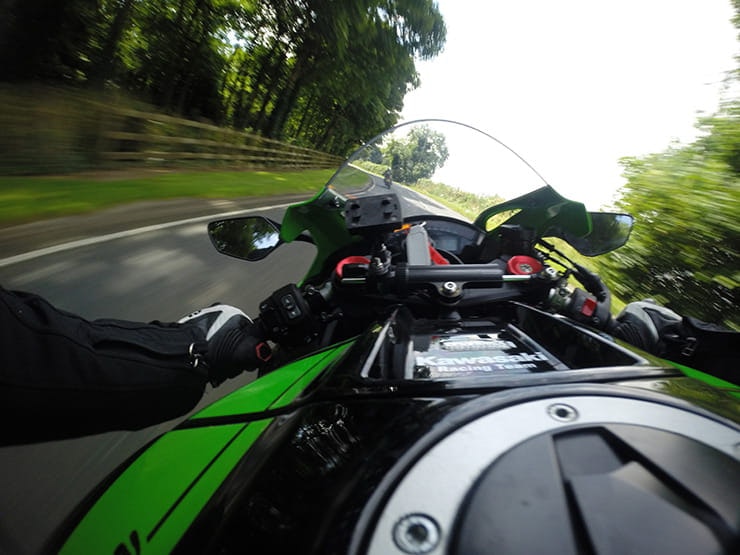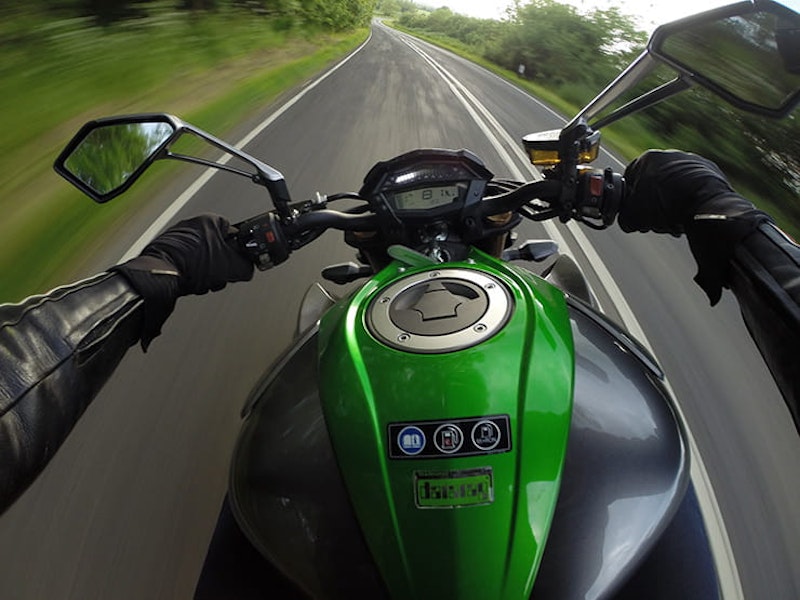Rider Skills: How not to crash on left handers
By Gary Baldwin
Director of Rapid Training
13.12.2018
In theory, this rider should be on the far righthand side of the road to get maximum vision through the left hander. In practice, perhaps he’s decided his speed doesn’t require the extra risk of crossing to the wrong side of the road.
Who’s your expert?
Gary Baldwin has a very particular set of skills. Firstly, he is a highly-experienced crash investigator for the police. Secondly, he is an ex-police motorcyclist who now runs the highly respected Rapid Training. And thirdly, he’s an ex-racer. So, he’s fast, can teach and knows the most common ways we crash. Here’s his guide to staying sunny side up.
As a crash investigator, left-handers are one of our biggest customers because the consequence of getting one wrong means you’re going to cross to the other side of the road. Getting a right hander wrong is bad enough, but at least the stuff you hit isn’t coming towards you.
What sort of roads do they happen on?
Most of these crashes are in 60-80mph bends on scratching roads, which can be A or B roads. Usually you haven’t got a perfect view – they’re not open corners. But saying that, there are crashes in 30mph bends and they can be nasty.
What’s the most common cause?
Carrying a shed full of speed. Then the rider emergency brakes – which stands the bike up – and then target-fixates on whatever is coming the other way.
So how exactly does it go wrong?
Fundamentally it’s down to an inability to assess the bend and pick up all the clues from road furniture (more on this in a future article). This leads to going in to the corner too fast. Losing speed is easier when upright, and if you’re doing it in the bend, it’s generally going wrong. The slowest point should be as you tip in. From there to the apex you should have a little bit of throttle on to steady the bike. The penalty for losing too much speed on the approach is that you have to use a bit more throttle going out. The penalty for not losing enough speed can be rather more serious.
What happens next?
Then it’s then generally down to looking in the wrong direction. You should be looking at the empty space at the corner exit, but what you tend to look at is what’s alarmed you which is probably an oncoming vehicle. The bike follows your eyes, whether you want it to or not. Remember that it ain’t over till it’s over. If you go in too fast, get on with your job of going round the corner – the chances are the bike and tyres can do it if you ask them.
Any other common left-hander crashes?
What many riders fail to appreciate is that being in the technically correct position – as far right as possible, so you can see as far as possible round the corner – is not the safest place to be. It’s fine, unless something is coming the other way. But some riders stay there, because they’ve read in a book that that’s where they should be.
What? Riders stay on the wrong side of the road?
Yes. Going on the other side of the road creates problems because it looks wrong to oncoming traffic, and then you don’t know how they’ll react. Quite often the driver will move to your side of the road to get away from the bike, and this often results in nasty side-to-side crashes. You don’t need to have a head-on to die. If the car takes your arm off, that will be enough because you’ll bleed to death. It doesn’t bear thinking about but these are the realities of what happens.
Are you saying don’t go onto the far right at all?
At Rapid Training we advocate only going over as far as the hazard you see. So if you see a car coming, you immediately come back to your side of the road and create some separation between you and the car. You don’t dogmatically stay on the textbook line because you ‘know’ you’ll be able swoop back onto your side of the road before the car reaches you. It sounds like common sense, but plenty of riders who’ve had advanced training don’t do it. Ultimately, the amount of extra view you get by going that far over isn’t worth the risk. And most people don’t go fast enough to justify it anyway.
So where should you position yourself for a left-hander if there is a vehicle coming?
Get at least a metre between you and the centre of the road. These days, drivers are distracted in their cars, and by staying closer to the middle than this, you’re trusting someone you haven’t met with your life. The driver only has to wander over a foot or so and you’re dealing with a nasty crash.
Perfecting your steering
With a clear understanding of cornering technique, you can perfect any series of bends and corners, as we see from Rapid Training and Suzuki

